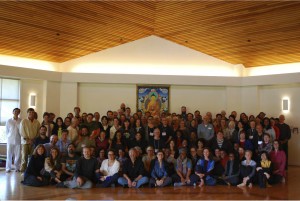Dominate or Subordinate?
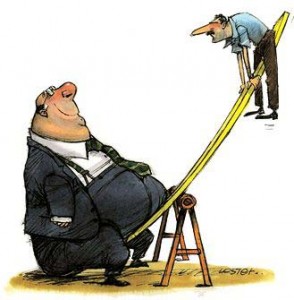 One of the workshops that I think I really “got” at the recent CDL (Community Dharma Leader) training retreat was the one led by Ruth King on the Five Characteristics of Dominant/Subordinate Dynamics, specifically as it relates to interactions between racial groups in the US. (Ferguson anyone?)
One of the workshops that I think I really “got” at the recent CDL (Community Dharma Leader) training retreat was the one led by Ruth King on the Five Characteristics of Dominant/Subordinate Dynamics, specifically as it relates to interactions between racial groups in the US. (Ferguson anyone?)
One of these characteristics is Cultural Conditioning:
* Dominant members live at the individual level. (“I’m not racist. I never owned slaves. I’m a good person.”)
* Subordinate members live a the group level. (“Black men are often perceived as dangerous by white people, so as a black man I have to get used to white people locking their car doors when I walk by.”)
This has so many implications! Frankly, I had no idea. But I’m starting to.
Here’s a way to practice waking up to this dynamic:
* Consider: In this relationship, am I in the dominate or subordinate group? In this instance, am I consciously aware of myself as a part of a group? Or not? How about the other person (people) in this relationship? Do they seem to be talking about themselves as an individual? Or as a member of a group? How do they seem to be relating to me — as an individual or group member? If there is a difference between how we think of ourselves — and each other? Is this getting in the way of our being able to understand each other?
Etc.
Just Listen
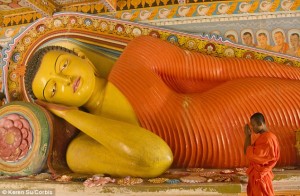 I’ve posted earlier about reading the Satipatthana Sutta out loud and having an experience that was closer to a visceral feeling of the words than a conceptual understanding of them. (full post here.) It was the English translation I was reading, of course, so I did understand what I was reading. But the repetition and the archaic style made it closer to music than text.
I’ve posted earlier about reading the Satipatthana Sutta out loud and having an experience that was closer to a visceral feeling of the words than a conceptual understanding of them. (full post here.) It was the English translation I was reading, of course, so I did understand what I was reading. But the repetition and the archaic style made it closer to music than text.
I had a similar-but-different experience of “knowing” the words — but in Pali this time — when I listened to an extraordinarily beautiful recording of the entire sutta, chanted by a Sri Lankan monk, Ven. Omalpe Sobitha Thero.
I offer it to you here, for your pleasure, and for whatever understanding comes with the experience:
To listen, start by clicking here. Then scroll down almost to the bottom of the page. Look for the Maha Satipatthana Sutta. Because the recording quality is so high, the file is quite large, so it is broken into four parts. Part 1 is an introduction in English (under 2 minutes). The chanting begins at part 2 (about 20 minutes) and ends with Part 4 (about an hour total).
It’s more than gorgeous.
Just listen.
Teachers Teach….
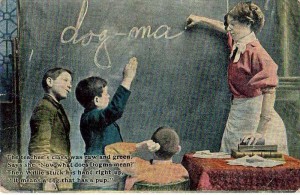 This from my notes at the Community Dharma Leader workshop:
This from my notes at the Community Dharma Leader workshop:
The Buddha taught 5 qualities that are present in those who rightly teach the Dharma.Such ones:
* Teach step-by-step
* Teach the law of cause and effect (karma)
* Teach with compassion
* Teach without regard for reward
* Teach without disparaging self or other
And this 6th quality, added by the CDL teachers:
* Teach what you know
***
May I not forget this!
That’s Us!
Here’s a photo I just received of the Community Dharma Leader group (CDL5) that I am now a part of. Getting there was a little rough, but I feel honored to say….these are my peeps!
(click to enlarge)
When the Student is Ready….
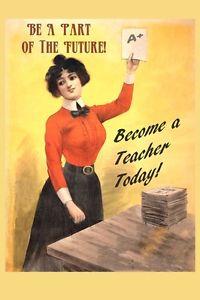 I admit that I had mixed feelings about taking part in the CDL (Community Dharma Leader) program….partly because I really, really like sitting silent retreats and I knew that the five CDL retreats (to be held over the next two years) would definitely NOT be silent. I also didn’t (and still don’t) have a clear idea of what I want to “do” in terms of being a “dharma leader,” but now that I’ve attended the first retreat, I know this program is right for me.
I admit that I had mixed feelings about taking part in the CDL (Community Dharma Leader) program….partly because I really, really like sitting silent retreats and I knew that the five CDL retreats (to be held over the next two years) would definitely NOT be silent. I also didn’t (and still don’t) have a clear idea of what I want to “do” in terms of being a “dharma leader,” but now that I’ve attended the first retreat, I know this program is right for me.
There are a lot of reasons for this, but the one that stands out the most is something one of the teachers, Gina Sharpe, said in her opening remarks. It was a play on the cliche that “when the student is ready, the teacher appears.”
Her twist was: When the student is ready, the teacher emerges…..meaning that the CDL program is not a training in the mechanics of teaching/leading/organizing (although all of that will also be included). Instead it’s an environment that fosters growth and support for the wisdom of the dharma to find expression in meeting the needs of the community. It’s not a traditional teacher training program. It’s a program that allows teaching to emerge from within.
And I am totally up for that.
Creative, Intuitive and Innovative
 I formally registered online today for the first Community Dharma Leader (CDL) retreat that will be held at Spirit Rock on April 16-23. There was a very concise description of the program on the registration page that I don’t remember reading before:
I formally registered online today for the first Community Dharma Leader (CDL) retreat that will be held at Spirit Rock on April 16-23. There was a very concise description of the program on the registration page that I don’t remember reading before:
“The Community Dharma Leader Program is training and support for committed Dharma practitioners who have the potential to develop leadership skills. The foundation of the training is the ancient lineage of Theravada; yet, it is also designed to encourage creative, intuitive and innovative responses to applying these timeless teachings to contemporary lives. These teachings offer a Path through the complex difficulties of our world in spiritual, social, political, cultural, interpersonal and personal contexts.”
That reference to “political” helps explain why one of the first books we’re reading is Joanna Macy’s Coming Back to Life. (Which, as you may know, I’m not all that thrilled about. See my previous post on the subject here.)
But I love the “creative, intuitive and innovative” part!
Although when it comes to “applying these timeless teachings to contemporary lives” it could get messy.
Which is kind of the point, right?
Stay tuned.
A View is Just a View
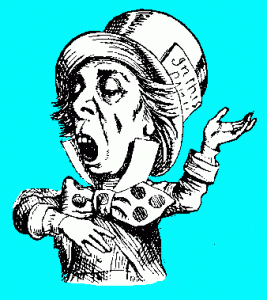 I’ve started reading Coming Back to Life, by Joanna Macy, which is part of the homework assignment for our first CDL retreat coming up in April. I know Macy is considered to be a great dharma teacher, specializing in Engaged Buddhism especially as it relates to Climate Change and what she calls Deep Ecology. But her tone — in my opinion — is so strident and political that…even though I basically agree with what she’s saying…I can hardly stand to read it.
I’ve started reading Coming Back to Life, by Joanna Macy, which is part of the homework assignment for our first CDL retreat coming up in April. I know Macy is considered to be a great dharma teacher, specializing in Engaged Buddhism especially as it relates to Climate Change and what she calls Deep Ecology. But her tone — in my opinion — is so strident and political that…even though I basically agree with what she’s saying…I can hardly stand to read it.
Example: In the short time span since the US Supreme Court put George W. Bush in the White House, the changes have been swift, deep and dramatic, giving free rein to economic forces that despoil the Earth and impoverish her people. Now with greater need than ever for public monitoring and outcry, we have become a truth-deprived and fearful populace.
(She’s right about George Bush and the Supreme Court, but really, does that belong in a dharma book!)
Anyway, I was getting more and more irritated (suffering!) with these and other outrageous statements such as:There is a mountain of evidence regarding the 9-11 attacks that was excluded from the 9-11 Commission’s report. It remains unaddressed by the US government, mainstream media and most of US institutions.
Jeeze.
But then, thankfully, I remembered this quote from the Buddha:
After investigation, there is nothing among all the views that such one as I would embrace. Seeing misery in philosophical views without adopting any of them and searching for truth, I discover inner peace. For one who is free from views there are no ties. For one who is delivered by understanding, there are no follies. But those who grasp after views and philosophical options wander about in the world annoying people.
That the Supreme Court should not have “put George W. Bush in the White House” is a view. (One with which I agree, but what good does it do to make an issue of it now?) That there is some mysterious “mountain of evidence regarding the 9-11 attacks” that is being kept from the American people is another view. Which sound like crazy paranoia to me, and which again — in my opinion — has no place in a dharma book.
But of course, this is also a view.
Whether she is “right” or “wrong” to put these things in her book is not the point.
I can have a view — I can agree or disagree or take issue with her views all I want — but I don’t have to get all riled up about it. It’s one thing to have a view about things and quite another to grasp onto that view…and to make myself (and others) miserable in the process.
May I continue to remind myself of this!
Back to School!
 As many of you know, I have been accepted into the 2-year Community Dharma Leader (CDL5) Program at Spirit Rock and I’ve just received my Official Welcome Letter, which gives a demographic overview of the CDL5 “class”:
As many of you know, I have been accepted into the 2-year Community Dharma Leader (CDL5) Program at Spirit Rock and I’ve just received my Official Welcome Letter, which gives a demographic overview of the CDL5 “class”:
We have a beautifully diverse community of 101 participants, including 39 Communities of Color and 39 who identify as being from LGBTIQ communities. We have 4 who identify as Gender Non-Comforming/Gender Queer, 66 as women or cis-femail, and 31 as men or cis-male. Participants’ ages range from mid-20’s to mid-70’s.
So this should be interesting!
The letter also includes a roster and to my delight, I recognize 9 of the names — several are dharma friends from Spirit Rock’s DPP4 program — and one is a fellow-attendee at the Dharmagiri retreat I was just at in Africa!
YAY!!!!
Oh, and yes, the letter also includes our first homework assignment, due before we meet at our first retreat this coming April: Read Coming Back to Life, by Joanna Macy and Molly Young Brown (2014 edition) and Satipatthana: The Direct Path to Realization, by Analayo.
Here’s the full Required Reading List:
Coming Back to Life, Joanna Macy and Molly Young Brown (2014 edition)
Satipatthana: The Direct Path to Realization, Analayo
Living Buddhist Masters, Jack Kornfield
Life of the Buddha: According to the Pali Canon, Bikkhu Nanamoli
A Path with Heart: A Guide Through the Perils and Promises of Spiritual Life, Jack Kornfield
Seeking the Heart of Wisdom: The Path of Insight Meditation, Joseph Goldstein
Lovingkindness: The Revolutionary Art of Happiness, Sharon Salzberg
Dharma by Color and Culture: New Voices in Western Buddhism, Hilda Guiterez Baldoquin
And here’s the Recommended Reading List:
Mindfulness: A Practical Guide to Awakening, Joseph Goldstein
Mindfulness in Plain English, Bhante Henepola Gunaratana
In the Buddha’s Words: An Anthology of Discourses from the Pali Canon, Bikkhu Bodhi
Handbook for Mankind, Buddhadasa Bikkhu
Dancing with Life, Phillip Moffitt
The Hidden Lamp: Stories from Twenty-Five Centuries of Awakened Women, Zenshin Florence Kaplow and Reigetsu Susan Moon
A Heart as Wide as the World, Sharon Salzberg
True Refuge: Finding Peace and Freedom in Your Own Awakened Heart, Tara Brach
Dipa Ma, Amy Schmidt
Dharma Punx, Noah Levine
Zen Mind, Beginner’s Mind, Shunryu Suzuki
Great Disciples of the Buddha, Nyanaponika and Hellmuth Kecker
The Awakening of the West: The Encounter of Buddhism and Western Culture, Stephen Batchelor
One City: A Declaration of Interdependence, Ethan Nichtern
***
So here we go!!!!

